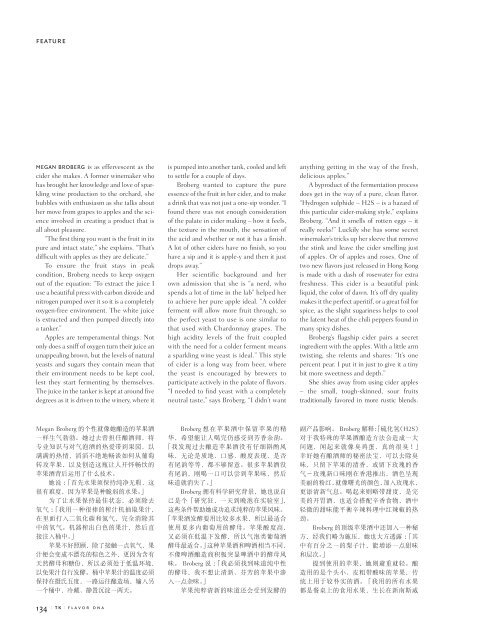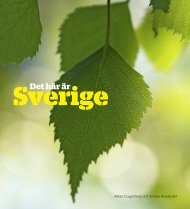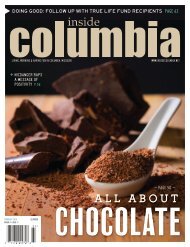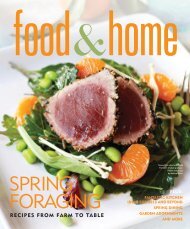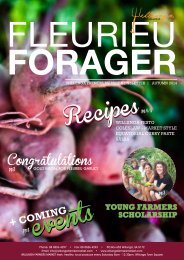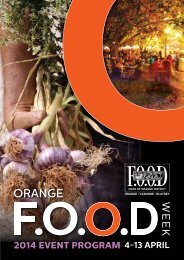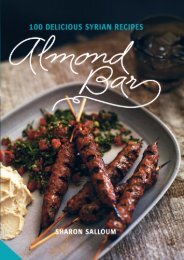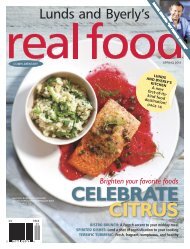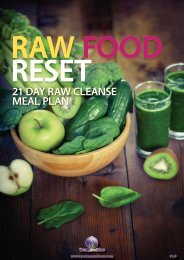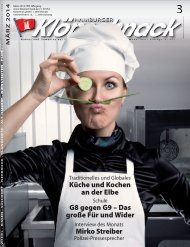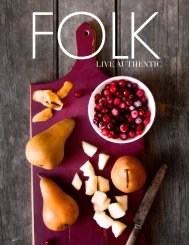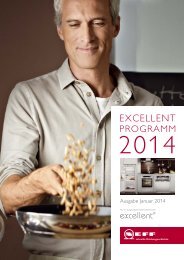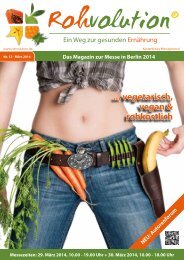Tasting Kitchen
Welcome to Tasting Kitchen. Season’s Greetings – or should I say Seasonings Greetings! This holiday TK issue is full of spices and flavorings. We talk to four talented and ambitious chefs about the flavor profile – or Flavor DNA – of dishes from India, Sichuan, Vietnam and the Isaan region of Thailand. Think cardamom, black salt and saffron, red peppercorns, red chilies and green chilies, dill, Kaffir lime, lemongrass, coriander, galangal and turmeric. We take a look at spices in history, and how even back in the Middle Ages savvy marketers knew the value of a good story. Spice merchants claimed that birds used cinnamon sticks to make giant nests in the cliffs above beaches in India, which “cinnamon hunters” then plotted to obtain. Today India is still associated with the world’s best spices. In this issue, for our first Tasting Destinations feature, TK’s Director of Photography David Hartung and Senior Writer Lucy Morgan traveled to Old Delhi to visit the world’s largest spice market and to New Delhi to visit one of the world’s top restaurants for modern Indian cuisine. One of our featured wines is the peppery Austrian Grüner Veltliner. We also talk to a New Zealand Wine Master about what makes great wine great, and to a leading French Champagne Chef de Cave about the value of patience and restraint. There are also some crabs running loose in the issue. A master chef in Macau shares his recipe for Quinoa Lobster Salad while five more from Hong Kong and Singapore share their favorite crab dishes and culinary musings. Happy Holidays,
Welcome to Tasting Kitchen.
Season’s Greetings – or should I say
Seasonings Greetings!
This holiday TK issue is full of spices and
flavorings.
We talk to four talented and ambitious
chefs about the flavor profile – or Flavor DNA
– of dishes from India, Sichuan, Vietnam and
the Isaan region of Thailand. Think cardamom,
black salt and saffron, red peppercorns, red
chilies and green chilies, dill, Kaffir lime,
lemongrass, coriander, galangal and turmeric.
We take a look at spices in history, and
how even back in the Middle Ages savvy marketers knew the value of a good story.
Spice merchants claimed that birds used cinnamon sticks to make giant nests in the
cliffs above beaches in India, which “cinnamon hunters” then plotted to obtain.
Today India is still associated with the world’s best spices. In this issue, for
our first Tasting Destinations feature, TK’s Director of Photography David Hartung
and Senior Writer Lucy Morgan traveled to Old Delhi to visit the world’s largest
spice market and to New Delhi to visit one of the world’s top restaurants for modern
Indian cuisine.
One of our featured wines is the peppery Austrian Grüner Veltliner. We also
talk to a New Zealand Wine Master about what makes great wine great, and to a
leading French Champagne Chef de Cave about the value of patience and restraint.
There are also some crabs running loose in the issue. A master chef in Macau
shares his recipe for Quinoa Lobster Salad while five more from Hong Kong and
Singapore share their favorite crab dishes and culinary musings.
Happy Holidays,
Create successful ePaper yourself
Turn your PDF publications into a flip-book with our unique Google optimized e-Paper software.
feature<br />
MEGAN BROBERG is as effervescent as the<br />
cider she makes. A former winemaker who<br />
has brought her knowledge and love of sparkling<br />
wine production to the orchard, she<br />
bubbles with enthusiasm as she talks about<br />
her move from grapes to apples and the science<br />
involved in creating a product that is<br />
all about pleasure.<br />
“The first thing you want is the fruit in its<br />
pure and intact state,” she explains. “That’s<br />
difficult with apples as they are delicate.”<br />
To ensure the fruit stays in peak<br />
condition, Broberg needs to keep oxygen<br />
out of the equation: “To extract the juice I<br />
use a beautiful press with carbon dioxide and<br />
nitrogen pumped over it so it is a completely<br />
oxygen-free environment. The white juice<br />
is extracted and then pumped directly into<br />
a tanker.”<br />
Apples are temperamental things. Not<br />
only does a sniff of oxygen turn their juice an<br />
unappealing brown, but the levels of natural<br />
yeasts and sugars they contain mean that<br />
their environment needs to be kept cool,<br />
lest they start fermenting by themselves.<br />
The juice in the tanker is kept at around five<br />
degrees as it is driven to the winery, where it<br />
is pumped into another tank, cooled and left<br />
to settle for a couple of days.<br />
Broberg wanted to capture the pure<br />
essence of the fruit in her cider, and to make<br />
a drink that was not just a one-sip wonder. “I<br />
found there was not enough consideration<br />
of the palate in cider making – how it feels,<br />
the texture in the mouth, the sensation of<br />
the acid and whether or not it has a finish.<br />
A lot of other ciders have no finish, so you<br />
have a sip and it is apple-y and then it just<br />
drops away.”<br />
Her scientific background and her<br />
own admission that she is “a nerd, who<br />
spends a lot of time in the lab” helped her<br />
to achieve her pure apple ideal. “A colder<br />
ferment will allow more fruit through, so<br />
the perfect yeast to use is one similar to<br />
that used with Chardonnay grapes. The<br />
high acidity levels of the fruit coupled<br />
with the need for a colder ferment means<br />
a sparkling wine yeast is ideal.” This style<br />
of cider is a long way from beer, where<br />
the yeast is encouraged by brewers to<br />
participate actively in the palate of flavors.<br />
“I needed to find yeast with a completely<br />
neutral taste,” says Broberg. “I didn’t want<br />
anything getting in the way of the fresh,<br />
delicious apples.”<br />
A byproduct of the fermentation process<br />
does get in the way of a pure, clean flavor.<br />
“Hydrogen sulphide – H2S – is a hazard of<br />
this particular cider-making style,” explains<br />
Broberg. “And it smells of rotten eggs – it<br />
really reeks!” Luckily she has some secret<br />
winemaker’s tricks up her sleeve that remove<br />
the stink and leave the cider smelling just<br />
of apples. Or of apples and roses. One of<br />
two new flavors just released in Hong Kong<br />
is made with a dash of rosewater for extra<br />
freshness. This cider is a beautiful pink<br />
liquid, the color of dawn. It’s off dry quality<br />
makes it the perfect aperitif, or a great foil for<br />
spice, as the slight sugariness helps to cool<br />
the latent heat of the chili peppers found in<br />
many spicy dishes.<br />
Broberg’s flagship cider pairs a secret<br />
ingredient with the apples. With a little arm<br />
twisting, she relents and shares: “It’s one<br />
percent pear. I put it in just to give it a tiny<br />
bit more sweetness and depth.”<br />
She shies away from using cider apples<br />
– the small, tough-skinned, sour fruits<br />
traditionally favored in more rustic blends.<br />
Megan Broberg 的 个 性 就 像 她 酿 造 的 苹 果 酒<br />
一 样 生 气 勃 勃 。 她 过 去 曾 担 任 酿 酒 师 , 将<br />
专 业 知 识 与 对 气 泡 酒 的 热 爱 带 到 果 园 , 以<br />
满 满 的 热 情 , 滔 滔 不 绝 地 畅 谈 如 何 从 葡 萄<br />
转 攻 苹 果 , 以 及 创 造 这 瓶 让 人 开 怀 畅 饮 的<br />
苹 果 酒 背 后 运 用 了 什 么 技 术 。<br />
她 说 :「 首 先 水 果 须 保 持 纯 净 无 瑕 , 这<br />
很 有 难 度 , 因 为 苹 果 是 种 脆 弱 的 水 果 。」<br />
为 了 让 水 果 保 持 最 佳 状 态 , 必 须 除 去<br />
氧 气 :「 我 用 一 种 很 棒 的 榨 汁 机 抽 取 果 汁 ,<br />
在 里 面 打 入 二 氧 化 碳 和 氮 气 , 完 全 消 除 其<br />
中 的 氧 气 。 机 器 榨 出 白 色 的 果 汁 , 然 后 直<br />
接 注 入 桶 中 。」<br />
苹 果 不 好 照 顾 , 除 了 接 触 一 点 氧 气 , 果<br />
汁 便 会 变 成 不 漂 亮 的 棕 色 之 外 , 更 因 为 含 有<br />
天 然 酵 母 和 糖 份 , 所 以 必 须 处 于 低 温 环 境 ,<br />
以 免 果 汁 自 行 发 酵 。 桶 中 苹 果 汁 的 温 度 必 须<br />
保 持 在 摄 氏 五 度 , 一 路 运 往 酿 造 场 , 输 入 另<br />
一 个 桶 中 , 冷 藏 、 静 置 沉 淀 一 两 天 。<br />
134<br />
| TK | flavor dna<br />
Broberg 想 在 苹 果 酒 中 保 留 苹 果 的 精<br />
华 , 希 望 能 让 人 喝 完 仍 感 受 到 芳 香 余 韵 。<br />
「 我 发 现 过 去 酿 造 苹 果 酒 没 有 仔 细 斟 酌 风<br />
味 , 无 论 是 质 地 、 口 感 、 酸 度 表 现 , 是 否<br />
有 尾 韵 等 等 , 都 不 够 留 意 。 很 多 苹 果 酒 没<br />
有 尾 韵 , 刚 喝 一 口 可 以 尝 到 苹 果 味 , 然 后<br />
味 道 就 消 失 了 。」<br />
Broberg 拥 有 科 学 研 究 背 景 , 她 也 说 自<br />
己 是 个 「 研 究 狂 , 一 天 到 晚 泡 在 实 验 室 」,<br />
这 些 条 件 帮 助 她 成 功 追 求 纯 粹 的 苹 果 风 味 。<br />
「 苹 果 酒 发 酵 要 用 比 较 多 水 果 , 所 以 最 适 合<br />
使 用 夏 多 内 葡 萄 用 的 酵 母 。 苹 果 酸 度 高 ,<br />
又 必 须 在 低 温 下 发 酵 , 所 以 气 泡 类 葡 萄 酒<br />
酵 母 最 适 合 。」 这 种 苹 果 酒 和 啤 酒 相 当 不 同 ,<br />
不 像 啤 酒 酿 造 商 积 极 突 显 啤 酒 中 的 酵 母 风<br />
味 。 Broberg 说 :「 我 必 须 找 到 味 道 纯 中 性<br />
的 酵 母 , 我 不 想 让 清 新 、 芬 芳 的 苹 果 中 渗<br />
入 一 点 杂 味 。」<br />
苹 果 纯 粹 清 新 的 味 道 还 会 受 到 发 酵 的<br />
副 产 品 影 响 。 Broberg 解 释 :「 硫 化 氢 (H2S)<br />
对 于 我 特 殊 的 苹 果 酒 酿 造 方 法 会 造 成 一 大<br />
问 题 , 闻 起 来 就 像 臭 鸡 蛋 , 真 的 很 臭 !」<br />
幸 好 她 有 酿 酒 师 的 秘 密 法 宝 , 可 以 去 除 臭<br />
味 , 只 留 下 苹 果 的 清 香 , 或 留 下 玫 瑰 的 香<br />
气 - 玫 瑰 新 口 味 刚 在 香 港 推 出 , 酒 色 呈 现<br />
美 丽 的 粉 红 , 就 像 曙 光 的 颜 色 , 加 入 玫 瑰 水 ,<br />
更 添 清 新 气 息 。 喝 起 来 则 略 带 甜 度 , 是 完<br />
美 的 开 胃 酒 , 也 适 合 搭 配 辛 香 食 物 , 酒 中<br />
轻 微 的 甜 味 能 平 衡 辛 辣 料 理 中 红 辣 椒 的 热<br />
劲 。<br />
Broberg 的 顶 级 苹 果 酒 中 还 加 入 一 种 秘<br />
方 , 经 我 们 略 为 施 压 , 她 也 大 方 透 露 :「 其<br />
中 有 百 分 之 一 的 梨 子 汁 , 能 增 添 一 点 甜 味<br />
和 层 次 。」<br />
提 到 使 用 的 苹 果 , 她 则 避 重 就 轻 。 酿<br />
造 用 的 是 个 头 小 、 皮 粗 带 酸 味 的 苹 果 , 传<br />
统 上 用 于 较 朴 实 的 酒 。 「 我 用 的 所 有 水 果<br />
都 是 餐 桌 上 的 食 用 水 果 , 生 长 在 新 南 斯 威


